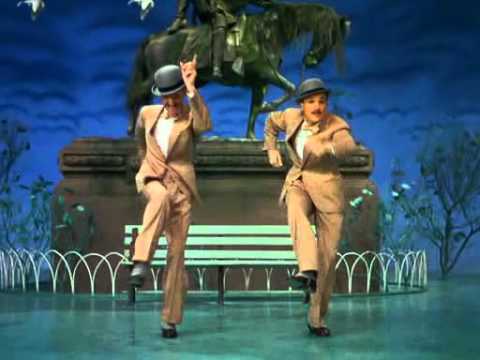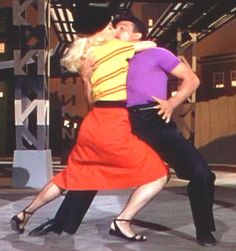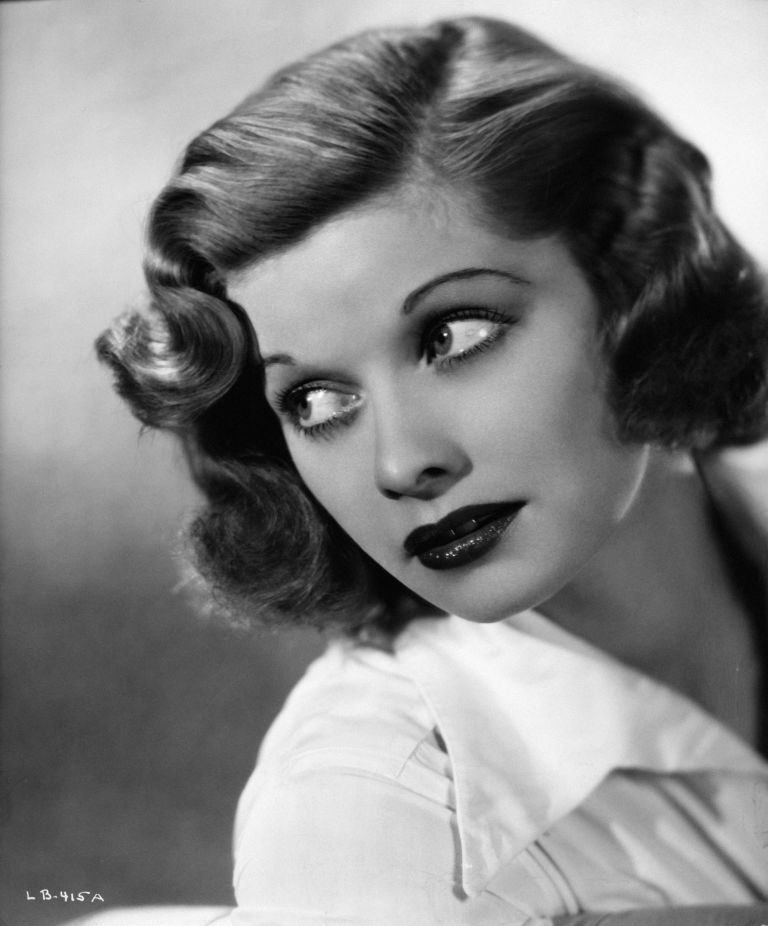I ‘m coming in hot with a last minute entry for Classic Film and TV Corner’s “Discovering Classic Cinema Blogathon.” I actually saw this blogathon announced awhile back and forgot to enter it. Oops. This is also my first opportunity to type something substantial using my new laptop that my husband got me for Christmas! Woohoo. My introduction to classic film didn’t come via the usual routes. I’m not old enough to have seen any of these movies in the theater during their original run. The first movie I saw in the theater was Disney’s The Little Mermaid at the age of 5 in 1989. Apparently I saw a re-release of The Aristocats in 1987 when I was 3, but according to my mom it did not go well and I did not see the whole movie. Lol. I traumatized my parents enough that it was 2 years before I went back. Having grown up in Salem, OR during the mid-to-late 80s through the early 00s, there wasn’t really any opportunity to see the classics in repertory theaters, as Salem doesn’t have any. While I did watch the annual TV viewings of The Wizard of Oz, and had secretly seen Psycho and The Birds despite my mom not wanting my sister and I to see them (my dad rented them while she was out of town), these did not ignite my love of classic cinema.

One evening in 1994, 10-year old me was flipping channels and came across Nickelodeon’s evening programming, something called “Nick-at-Nite.” For the record, 90s Nick-at-Nite was one of the greatest things ever and I really wish it would come back, but I digress. Anyway, I was instantly sucked in by the colorful graphics, catchy jingles and fun animation that once graced the evening Nickelodeon block. A voiceover came on screen and announced that a show called I Love Lucy was coming up on the schedule. I honestly do not recall if I’d ever seen or heard of I Love Lucy prior to this moment, but I do know that it was not something I watched regularly. The now-familiar I Love Lucy theme song started, the hearts on satin appeared with the cast’s names: Lucille Ball, Desi Arnaz, Vivian Vance, and William Frawley. I still remember the first episode I saw, “L.A. at Last!” with William Holden guest starring. At that moment, I had no idea who the cast members were, let alone William Holden.
I was instantly transfixed by Lucy’s antics. In “L.A. at Last!,” Lucy decides that she and the Mertzes need to find the “celebrity watering hole,” where the stars all gather at the same place, thus saving Lucy time in having to track them down one-by-one. Bobby the Bellboy suggests that the group visit Hollywood’s famed Brown Derby restaurant–a well known hotspot for celebrities. As an aside, I will forever be sad that I cannot go to the Brown Derby, nor can I go to 99% of the famous Hollywood nightclubs of the 30s-50s. No Ciro’s or The Mocambo for me. Anyway, while at the Brown Derby, Lucy, Ethel and Fred are spotting celebrities left and right. We hear multiple celebrities paged to the telephone: Cary Grant, Gregory Peck, Walter Pidgeon, Ava Gardner. Lucy and the Mertzes see each and every one of them (offscreen) get up for the phone. Ethel also manages to offend Eve Arden in the neighboring booth by asking her to identify a caricature of herself as either Judy Holliday or Shelley Winters. Lucy for her part, is in awe of Ethel. “You touched her!” Lucy says, much to Ethel’s dismay at her faux pas.

Then, big star William Holden sits down in the booth next to Lucy and the Mertzes. Ethel is immediately starstruck and gets Lucy’s attention. Lucy catches a glimpse of Holden in the booth and is swooning. Being the creeper that she is, Lucy can’t stop staring at Holden, making him very uncomfortable in the process. Lucy’s encounter with Holden at the Brown Derby culminates with her tripping the waiter and causing him to dump a cream pie all over Holden’s head. Later, Holden meets Ricky at MGM and offers to give him a ride home to his Beverly Palms Hotel suite. When Ricky tells Lucy he’s brought a big star home with him, Lucy is overjoyed, until Ricky reveals the big star’s identity. Frantic, Lucy puts on a ridiculous disguise which includes large black cat eye glasses, a scarf to hide her hair, and a big putty nose. The scene that follows is hands down the funniest moment of the entire series (in my opinion). The look on William Holden and Desi Arnaz’ faces when Lucy turns around after “fixing” her putty nose is hysterical. How lucky was I to have this be the first episode of I Love Lucy that I ever saw?
I was hooked on I Love Lucy from then on, watching it at 8:00pm every night–except on Saturdays, I Love Lucy started at 10:00pm. On “Whole Lotta Lucy” Saturdays, Nick-at-Nite showed two episodes of I Love Lucy, followed by an episode of The Lucy-Desi Comedy Hour. Every episode of The Lucy-Desi Comedy Hour featured a different guest star. With the exception of Fred MacMurray, I didn’t know who any of the guest stars were. I also knew very few of the I Love Lucy guest stars, with the exception of John Wayne, Orson Welles, and Bob Hope. As a kid, I always figured that these were people who “were famous at the time.” Lol.

Anyway, my family and I were also avid library goers, spending approximately one Sunday afternoon a month perusing the stacks. Now fully obsessed with I Love Lucy and Lucille Ball, I checked out each and every book about her in the library. I read multiple biographies about her, Desi, Vivian Vance, and anything I Love Lucy-adjacent. From these books, I learned that Lucille Ball had a fairly extensive film career and discovered that my library had a large selection of “The Lucille Ball Signature Collection” VHS movies. I watched each and every one. At the same time, my parents’ cable package had just acquired a new channel, the recently launched TCM. Every Sunday, I would find the new TV guide supplement in the newspaper and comb through it, looking to see if any Lucille Ball films or documentaries were scheduled that week. I’d always check PBS, A&E’s Biography program, TCM and AMC (when it showed old films).
From Lucille Ball’s film career, I was introduced to a myriad of different stars who quickly became favorites of mine. Through Lucy’s film, DuBarry Was a Lady, I learned about Gene Kelly. Because of my interest in Gene, I watched Singin’ in the Rain and The Pirate. ‘Rain’ introduced me to Debbie Reynolds and ‘Pirate’ introduced me to Judy Garland, who I was aware of through The Wizard of Oz, but hadn’t seen her in anything else prior. Through Judy, I learned about Fred Astaire (Easter Parade), which led me to Ginger Rogers. Rogers I’d seen before as she’d appeared with Lucy and Katharine Hepburn in Stage Door, which I’d borrowed from the library. From Stage Door, I recognized Eve Arden from the episode of I Love Lucy I’d seen. I continued on this path of constant discoveries and am still on the path somewhat, except that I’m more familiar with all the actors and know that the ones who appeared as guest stars on I Love Lucy weren’t just people who were famous at the time of I Love Lucy’s production era.
Cornel Wilde is no longer known as “Cornel Wilde is in the penthouse!” (I Love Lucy, “The Star Upstairs”). He’s a co-star in the excellent Leave Her to Heaven with Gene Tierney and he’s great in The Big Combo, his film being promoted on his episode of I Love Lucy. Charles Boyer isn’t just “LUCY! I love you, rawrrrrr” ((I Love Lucy, “Lucy Meets Charles Boyer”). He’s Ingrid Bergman’s terrifying husband in Gaslight, or the man who woos Olivia de Havilland in Hold Back the Dawn. Boyer is the man who arranges to meet Irene Dunne at the top of the Empire State Building in Love Affair. Unbelievably, I also didn’t know anything that William Holden did aside from being hilarious in I Love Lucy. I finally saw him in Sunset Boulevard and was blown away. After having seen him in so many films now, I can definitely say that Holden was a bona fide superstar.

From reading all the library books about Lucille Ball and her film career, I learned that she made it a point to hire her friends from the movies when she had an opportunity to do so. The film friend of hers who benefitted the most from this is of course, William Frawley, who is now a legend in his own right for playing the irascible Fred Mertz on I Love Lucy. Having seen a good amount of classic films now, Frawley is everywhere. He plays Errol Flynn’s boxing promoter, Billy Delaney, in Gentleman Jim. He also plays a cop in Flynn’s Footsteps in the Dark, and Deanna Durbin’s Lady on a Train. He is also in the perennial Christmas classic, Miracle on 34th Street. Frawley had called up Lucy’s husband and Desilu Production president, Desi Arnaz, and asked for the job of Fred Mertz. CBS was hesitant to take a risk on the alcoholic Frawley, but Lucy and Desi prevailed and Frawley is now a television legend.
I find myself pointing out I Love Lucy characters in various classic films. Elizabeth Patterson who played Mrs. Trumbull is everywhere in classic film. She makes a memorable appearance as Fred MacMurray’s Aunt Emma in Remember the Night. Charles Lane is another character who pops up everywhere He appears as Lucy’s typing instructor in Miss Grant Takes Richmond (also co-starring William Holden). He also appears in uncredited roles in a million excellent pre-code films such as: Blonde Crazy, Employees’ Entrance, 42nd Street, Golddiggers of 1933, She Had to Say Yes, and Blondie Johnson. He made multiple appearances in I Love Lucy: the expectant father (I always say “nine girls” when I see him in a movie), the passport office clerk, the man conducting auditions in the episode where Lucy has to tell the truth for 24 hours, and he plays the Ricardos business manager, Mr. Hickox. Allen Jenkins, has a memorable role in an episode of I Love Lucy playing a police officer who apprehends “Sticky Fingers Sal” and “Pickpocket Pearl” (Lucy and Ethel). Jenkins was almost a mainstay in Warner Brothers films, playing the sidekick to the male lead. He’s in Dive Bomber, Footsteps in the Dark, The Perfect Specimen, all with Errol Flynn. He also supports Humphrey Bogart in Dead End, Racket Busters, and the horribly named The Amazing Dr. Clitterhouse. I even spotted Mr. Martinelli, owner of the pizza restaurant where Lucy works for one episode, as the villain in Marked Woman with Bogart and Bette Davis!
To this day, I Love Lucy and Lucille Ball are still my favorites. I also love Classic Film and I just love how well my favorite television show and my favorite era of filmmaking are so closely intertwined.














































